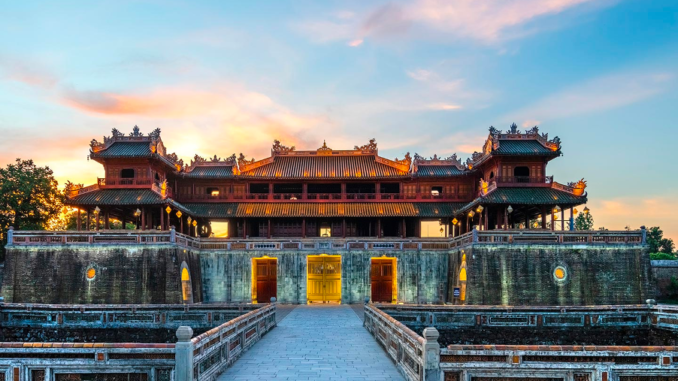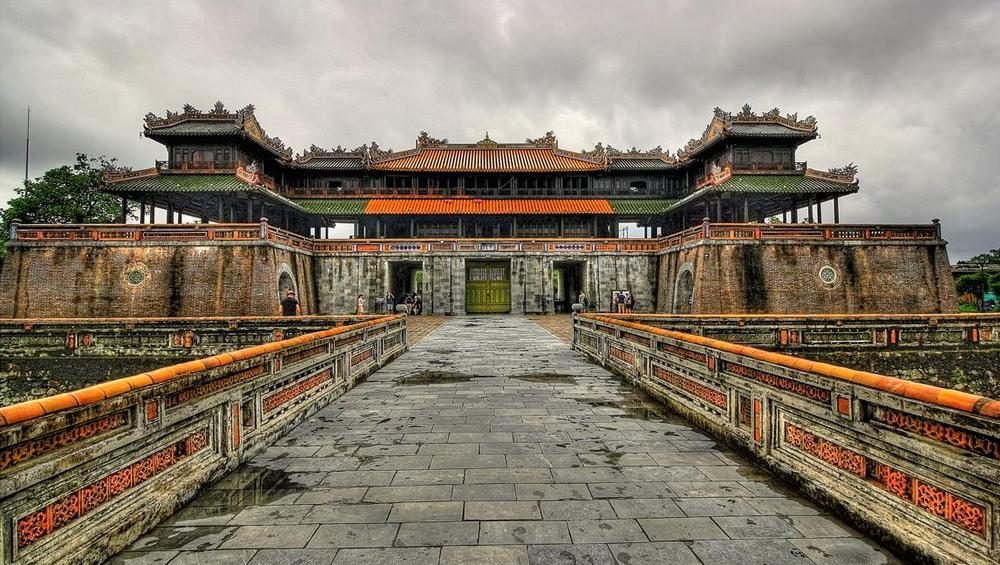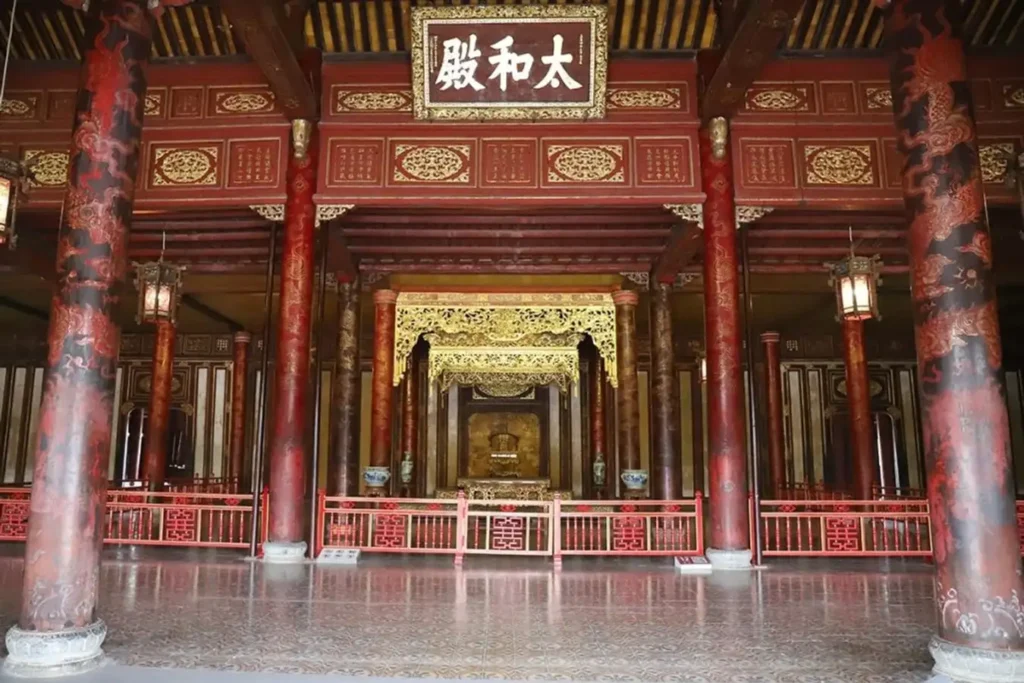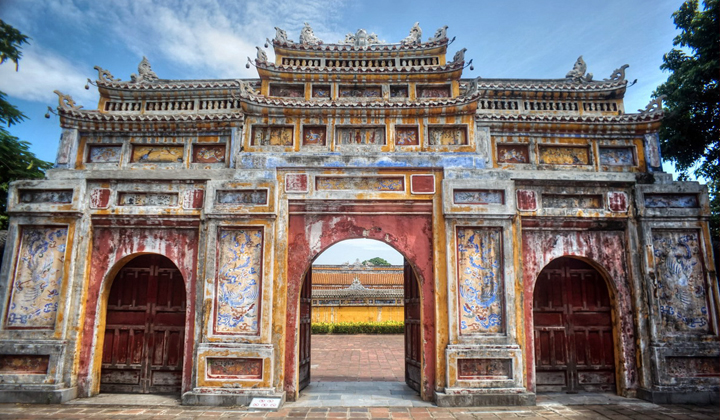
Hue Citadel is part of Hue Imperial Monument complex, imbued with cultural, historical and architectural imprints of Nguyen Dynasty, was built from the early 19th century to the first half of the 20th century and was recognized by UNESCO as a world cultural heritage in 1993. Panorama Hue Citadel still retains many unique feudal marks left by Nguyen Dynasty for hundreds of years.
I. Introduce Dai Noi Hue (Hue Citadel)
Address: 23/8 Street, Thuan Hoa Ward, Hue City
Hue Citadel is where the living and activities of Nguyen kings and the last feudal court of our country took place. Hue Citadel can be considered the most massive construction in Vietnamese history to date. It had a construction process that lasted for many years with tens of thousands of construction workers and a series of jobs such as filling rivers, digging trenches, and building ramparts, in addition to a huge volume of soil and rock up to millions of meters.
II. History of formation
In 1803, when King Gia Long ascended the throne, he realized that Hue was a peaceful and poetic place along Huong River. Then, King Gia Long came up with the idea of choosing this land as the ancient capital of Nguyen Dynasty. After 30 years of construction, the entire new capital project was officially completed, Hue Citadel has a charming beauty, in harmony with the beauty of nature.
III. Architecture
Hue Citadel has two main areas: the Imperial Citadel (Hoàng Thành) and the Forbidden City (Tử Cấm Thành), each area includes many different works. The Imperial Citadel area includes Ngo Mon Gate and Thai Hoa Palace. The Forbidden City is an area reserved for the king and royal family, including Dai Cung Mon, Ta Vu and Huu Vu, Can Chanh Palace, Thai Binh Lau, Dien Tho Palace…
1. Ngo Mon Gate
This is a massive, majestic construction with extremely elaborate, sophisticated and solid patterns. Ngo Mon is not simply the entrance gate but also the representative face of the Hue Royal Citadel, so it is designed with many layers with a surrounding moat system.

Spent nearly 2 centuries and witnessed many historical events of the country. Ngo Mon Gate still exists over time and has become an excellent ancient architectural masterpiece.

2. Thai Hoa Palace
This is a symbol of power of Nguyen Dynasty at that time, located in the Imperial Citadel area of Hue Citadel. Thai Hoa Palace is the most important building in the overall Imperial Citadel of Hue. This place and Dai Trieu Nghi yard were once the place where court meetings of Nguyen Dynasty took place.
Thai Hoa Palace is considered the most prominent highlight of Hue royal architectural art. The main material used to build the palace is ironwood. The roof, columns, etc. are carved with delicate, meticulous dragon shapes.
3. Dien Tho Palace
Among the many palaces in the Hue Imperial Citadel, Dien Tho Palace is considered the largest palace architectural system in Hue that remains intact today. This place used to be the residence of the Queens and powerful women next to the king.

Apply for Vietnam visa
Apply for a Vietnam visa to visit Tu Duc’s Tomb here. Currently, there are 3 common ways to apply for a Vietnam visa. Check this list to see if your nationality is eligible for a Vietnam visa: https://vietnam-amazing.com/vietnam-visa/vietnam-visa-exemption-list-2024/
– Through Vietnam Embassy/ Consulate.
– Through Vietnam eVisa.
– Through Vietnam visa on arrival (VOA).
To find out more details about how to apply for Vietnam tourist visa, please follow this article: How to Apply for Vietnam Tourist Visa